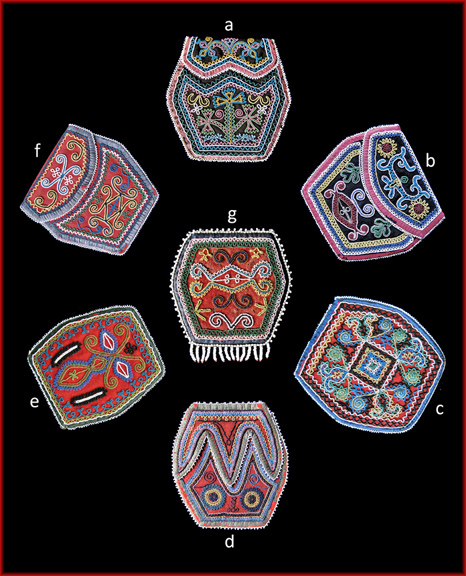This is also an early group of bags from the 1800-1830 period. The use of silk ribbon as an edge trim on early souvenir bags may have been occasioned by the end of the French Revolution (1789-1799). The Revolution enforced an uncompromising simplicity of dress in French society so fabric manufacturers dumped large inventories of silk ribbons onto the American markets. Franklin Allen points out that during the period from 1841 – 1846, “there was a noticeable falling off in the demand for silk goods” (Allen 1904:32). These dates coincide with the rapid decline in the use of silk edging on beaded bags and correspond with the introduction of the Niagara floral style (discussed on another page) which almost exclusively used a cotton ribbon/hem tape as the edge binding.
There are numerous variations on the flaps of early souvenir bags. Some had a functional flap that would fold over the top, to secure the contents (examples a, b, and f). On others, there was no actual flap, yet one was suggested in the design. Some bags had flaps on both sides that were non-functional and seemingly there just as ornamentation. Access to the inside was through an opening along the top. Still, others had no flap at all and lacked any suggestion of one in the design (examples c, e, and g). A very unusual bag with a three-point flap (example d) dates from the first quarter of the nineteenth century. The bag’s flap is non-functional and access to the inside is through a top opening.
References:
Allen, Franklin
